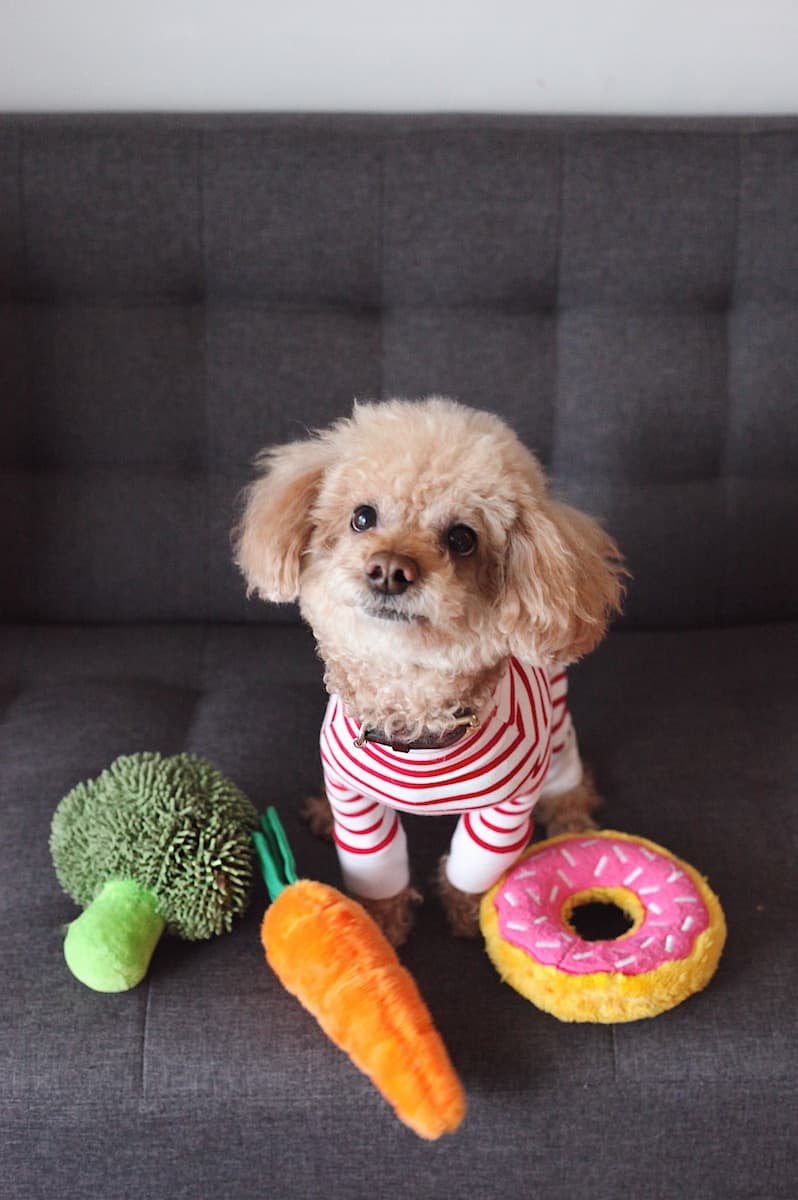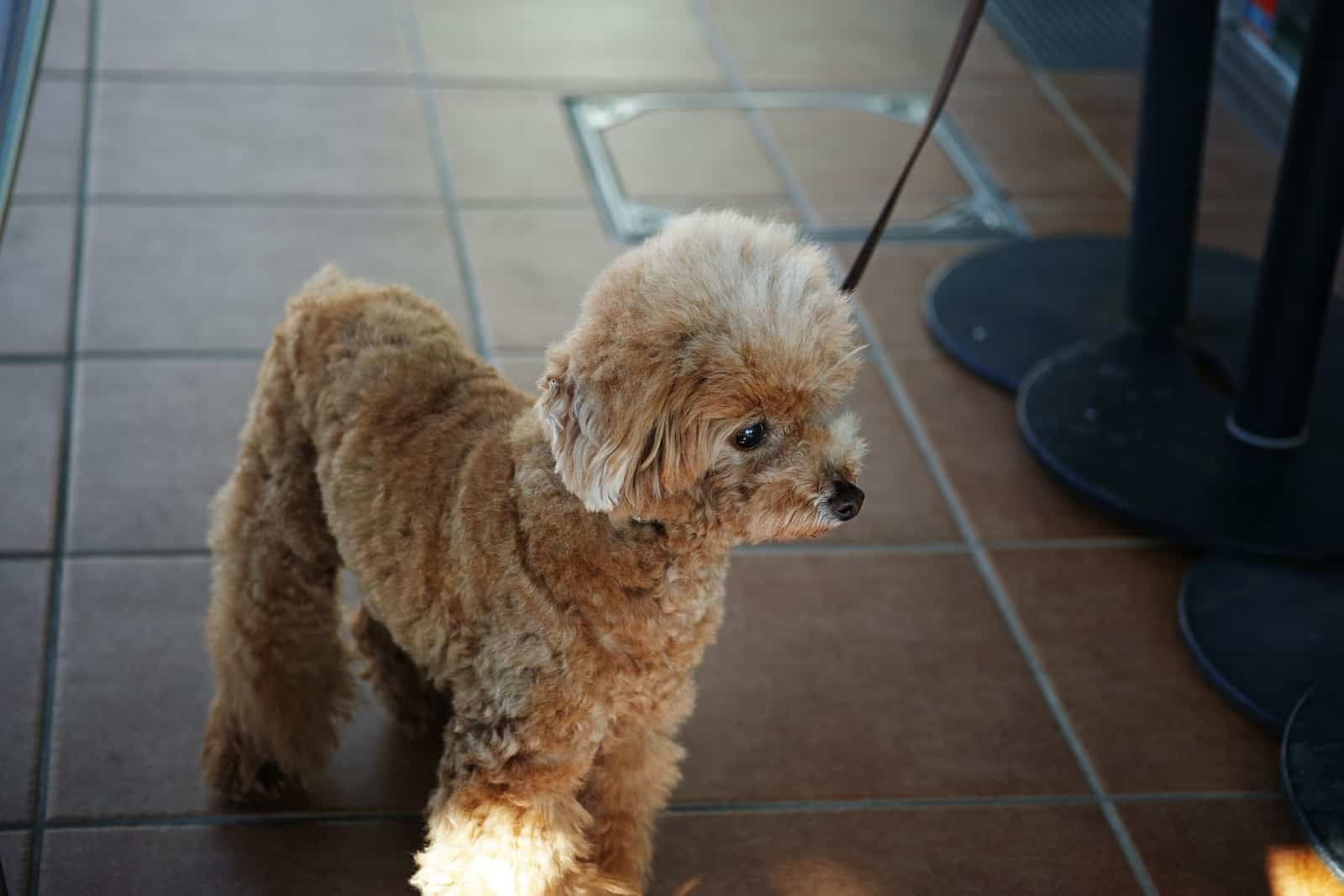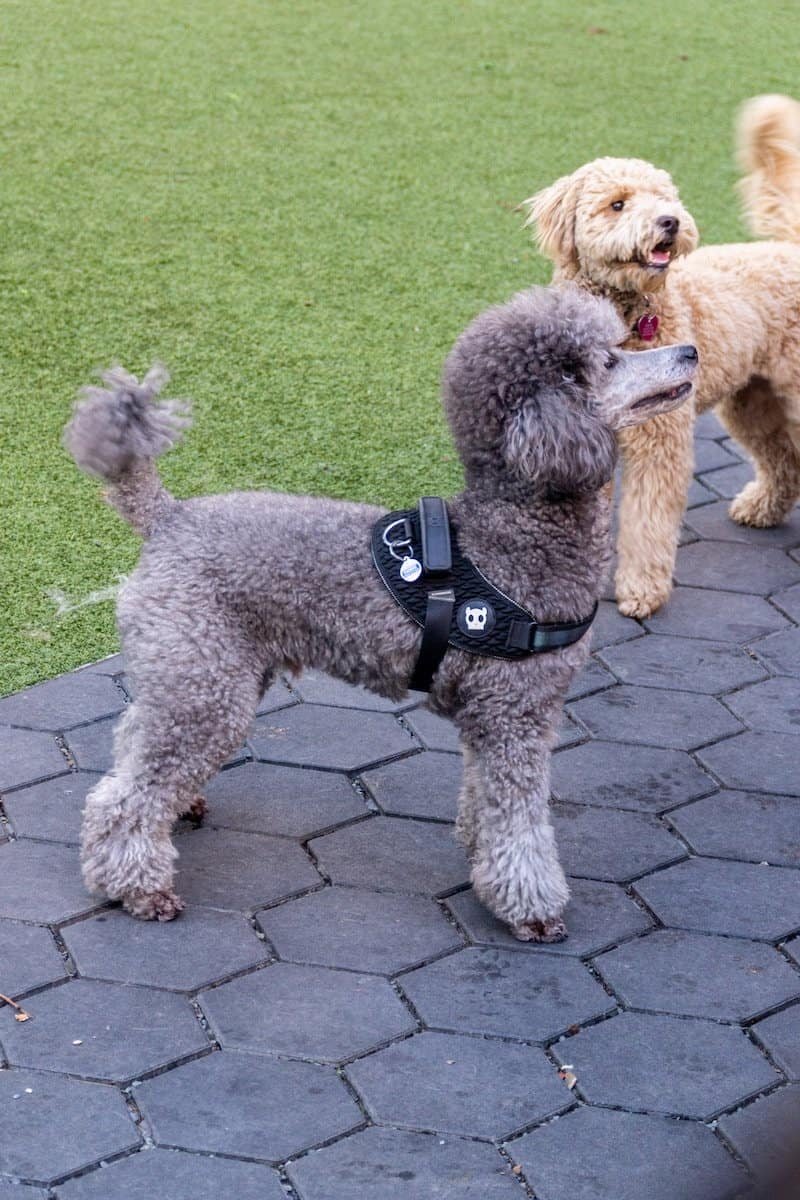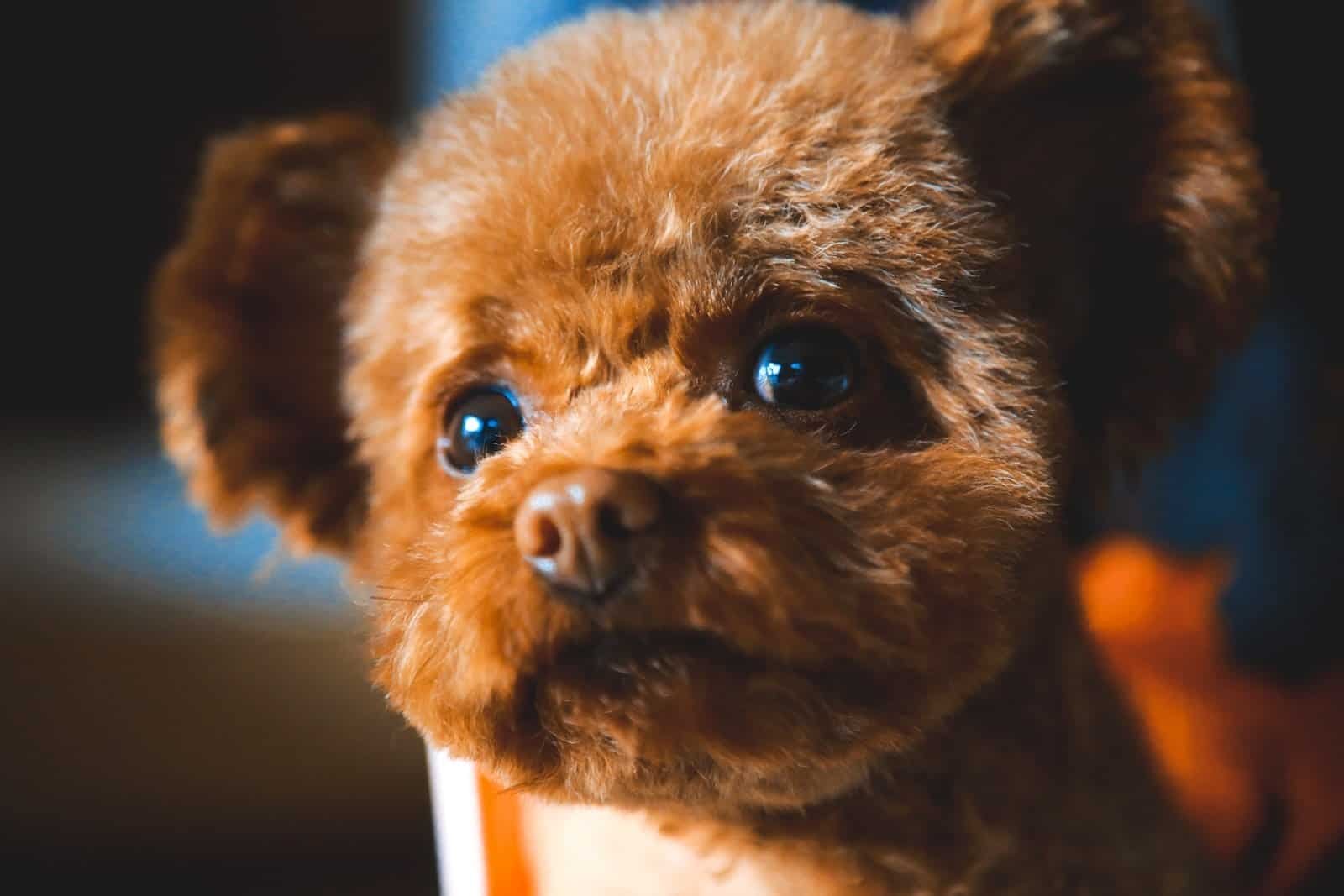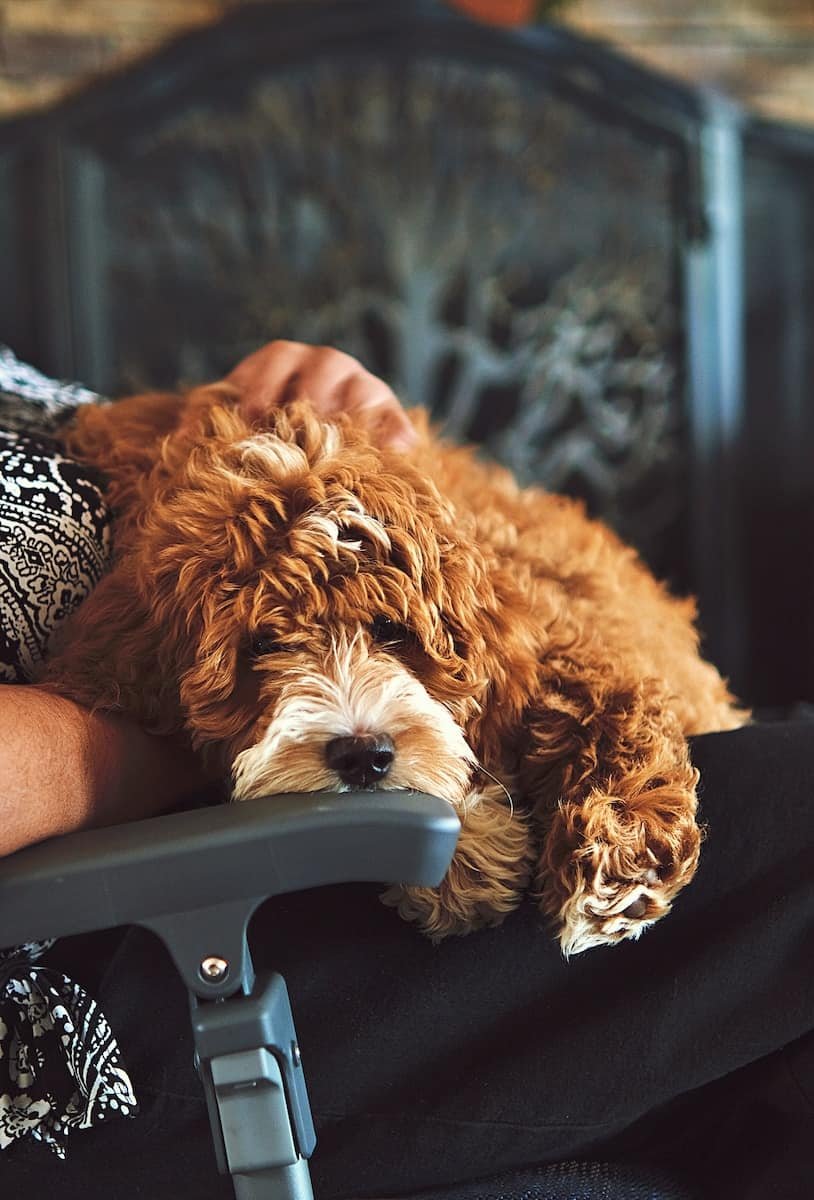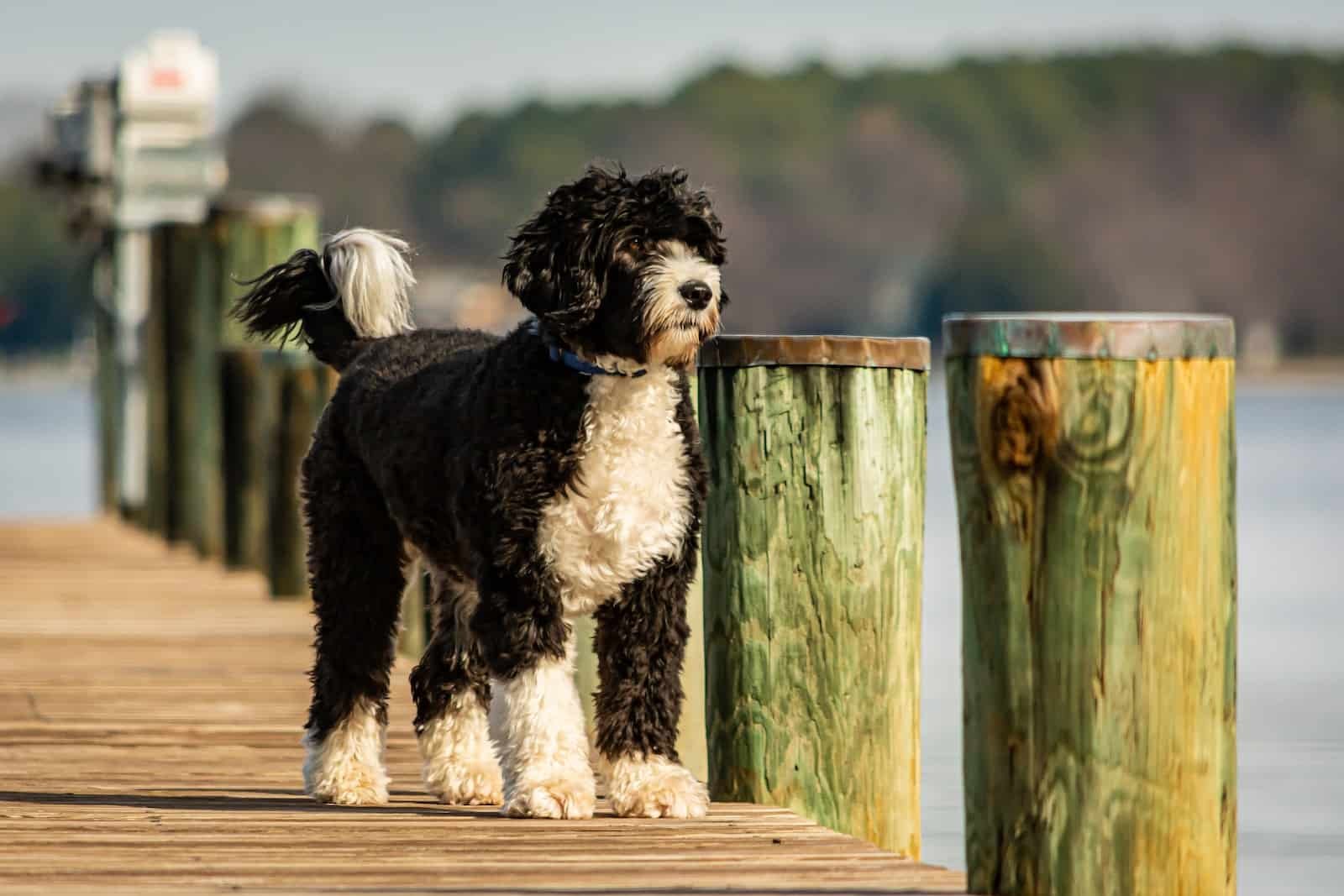Do you want a small, loyal companion with a big personality? Look no further than the Mini Poodle—the pint-sized pup that packs a lot of love into its tiny frame. With their signature curly coat and charming good looks, it’s no wonder why these beloved dogs have been around for centuries. From their unique history to their care requirements and fun activities to enjoy together, this article will summarize all things Mini Poodle: what makes them special, how to care for them, and more! Read on to learn all about this delightful breed and find out if they might be the perfect canine friend for you.
Mini Poodle History
Mini Poodles are a small breed of dog that has been around since the 19th century. They come in three sizes: toy, miniature and standard. Toy Poodles stand up to 10 inches tall while miniature and standard poodles range from 11 to 15 inches and 15-22 inches, respectively. Miniature poodles are the most popular among these different sizes.
They are known for their intelligence and playful nature, making them great companions for many people—including those with allergies because of the low dander production of their curly coat. Mini Poodles need mental stimulation and regular physical exercise, so activities such as agility courses or long walks can really help keep them entertained.
When it comes to health concerns, this breed is mostly prone to hip dysplasia, retinal atrophy, heart disease and dental disease—but this can be minimized with regular vet checks and a healthy diet. Daily brushing and occasional baths will also help keep your pup’s coat looking its best! With proper care and attention, the average life expectancy of a Mini Poodle is between 12 to 16 years.
If you’re looking for an energetic yet loyal companion that loves to learn new things, then a Mini Poodle might just be the perfect fit! With their good looks, low shedding coats and big personalities – they will bring lots of joy into your life!
History of the Mini Poodle
The Mini Poodle is a small breed of dog that first became popular in the 19th century. They have since become one of the most beloved breeds, thanks to their intelligence, playful nature and low shedding coat. Over time, this breed has been used for a variety of tasks, from circus performers to popular lapdogs.
Mini Poodles are recognized by leading kennel clubs, including the American Kennel Club (AKC). This breed is known for its high energy levels and an activity level that requires daily exercise. They also have a reputation for being intelligent, making them great companions for people who love to teach and engage with their dogs.
Despite their small size, Mini Poodles are strong-willed and can sometimes be stubborn – so early socialization and training is important in order to ensure your pup grows up to be a well-adjusted adult. When it comes to health concerns, they are prone to a few conditions such as hip dysplasia and retinal atrophy – but this can be minimized with proper care and nutrition. With the right amount of love and attention, your Mini Poodle will be a happy addition to your family.
Mini Poodle Dog Breeds
1. Bichon Frise
They are hypoallergenic breeds, making them an ideal match for families with allergies. They are an intelligent breed and can be easily trained; additionally these dogs are usually very friendly, affectionate and loyal. They get along well with children and other animals too.
2. Cavalier King Charles Spaniel
The Cavalier King Charles Spaniel is a gentle, friendly breed that is known for being great with children and other pets. They also have a similar coat type, making grooming easier. The Cavalier King Charles Spaniel’s average weight is between 12 and 18 pounds and average height is 11 to 13 inches at the shoulder. They have a long, silky coat that is tricolor (black and tan with white) or ruby-red. The Cavalier King Charles Spaniel also has a long muzzle and large, round eyes. Cavaliers are usually very good with children and other animals, and they make great family pets.
3. Maltese
The Maltese is another hypoallergenic breed. They are also easy to train and are known for being social and friendly towards other pets.
Maltese are small dogs with an average height of 8 to 10 inches and a weight between 4 and 5 pounds. They have a single layer coat that is white, silky, and long with no undercoat. The Maltese is considered hypoallergenic because they lack the proteins in their skin and saliva that trigger allergies in some people.
The Maltese is easy to train and can be taught basic commands such as sit, stay and come. They are also known for being social and friendly towards other pets.
4. Shih Tzu
The Shih Tzu is a playful and affectionate breed. They also have a similar coat type, making grooming easier. Shih Tzu is a toy dog breed originating from China and Tibet. It is known for its long and silky coat, with the hair falling to either side of the face. This breed is often referred to as the “Lion Dog” because its thick coat resembles a lion’s mane. The Shih Tzu has a short snout and large eyes, giving it an adorable and sweet look.
The Shih Tzu is a small breed, with an average height of 8 to 11 inches and a weight between 9 to 16 pounds. They have a long, silky coat can come in a variety of colors. The coat requires frequent brushing, and it is important to give your pup regular baths or they can become matted easily.
Though the Shih T zu is a good breed for people with allergies, they do shed some and may trigger allergies.
5. Yorkshire Terrier
The Yorkshire Terrier is a small, energetic breed. They are also easy to train and are known for being social and friendly towards other pets.
Yorkshire Terriers have a long, glossy coat of fur that is usually either black and tan or blue and tan. They are small dogs, typically weighing between 4 and 7 lbs, with adults having an average height of 8 to 9 inches.
Yorkshire Terriers make great family pets because of their friendly nature and low-maintenance grooming needs. They require regular brushing and occasional trimming, but they are low-shedding and hypoallergenic. They are also known to be fairly energetic and require a daily exercise in order to stay healthy.
6. Pomeranian
The Pomeranian is a small, lively breed. They are also both hypoallergenic breeds, making them ideal for families with allergies.
Pomeranians are alert and friendly, with a distinctively fluffy coat. They have a fox-like face that often features an expression of intelligence and curiosity. Their coats come in a variety of colors, including black, white, orange, red, sable, blue, brown and more.
Pomeranians are highly intelligent and can be trained to perform tricks and obedience commands. On average, they stand between 6 and 8 inches tall and weigh between 4 and 5 pounds. They require regular brushing of the fur to remove tangles and mats.
7. Dachshund
The Dachshund is a small breed that is known for being loyal and affectionate towards their owners. They also have a similar coat type, making grooming easier.
Dachshunds typically have short, smooth fur that may be black, brown, red or a combination of these colors. They often have a long body and short legs, which helps them to maneuver tight spaces and make them skilled hunters. Dachshunds are active and playful dogs that need regular exercise and mental stimulation to keep them happy.
Care and Feeding
Mini Poodles are an energetic and active breed, making them ideal for people who love to stay on the move. They require daily exercise and mental stimulation in order to stay healthy and happy. Miniature poodles typically reach heights of 11-15 inches, while standard poodles can range anywhere from 15 to 22 inches tall.
When it comes to feeding your mini poodle, you should always provide a balanced diet that is rich in protein and low in fat. Many of these breeds also benefit from daily brushing and grooming, as they have long coats that can easily become tangled or matted if left unchecked.
Because of their small size, Miniature Poodles tend to be fairly long-lived – with life expectancies ranging from anywhere from 12 to 15 years. However, they can be prone to certain health conditions such as heart disease, dental disease, and skin allergies – so it’s important to keep up with regular checkups. For people with allergies, this breed may not be the best choice, as they do shed lightly throughout the year. With proper care and nutrition, however, your Mini Poodle will be sure to bring lots of joy into your life!
Grooming Requirements
Mini Poodles require daily brushing and grooming to keep their coats healthy and free of tangles or mats. Their long, curly coat can be kept in check with regular trims. Mini Poodles should be trimmed around the face, legs, and feet every 4-6 weeks, depending on how quickly the hair grows. It’s important to note that trimming too close to the skin can cause irritation, so it’s best to consult a professional groomer if you’re not sure how much hair to take off.
Besides frequents trims, your mini poodle will need regular baths and nail clippings as well. Bathing helps remove dirt and debris from their coat while also making it softer and shinier. Nail clipping helps maintain healthy paw pads, as overgrown nails can cause pain when walking or running. Regular visits to the groomer may also help prevent matting or tangling of the fur – making brushing easier down the line!
Health and Lifespan Considerations
Miniature poodles are renowned for their intelligence and active lifestyle. However, it’s important to consider the health and lifespan considerations of these popular breeds. Miniature poodles typically have a life expectancy of 12-15 years, although they can live up to 18 years with proper care. In order to keep your mini poodle healthy and happy, it is important to ensure daily exercise, mental stimulation, and adequate nutrition. Hereditary diseases such as hip dysplasia and retinal atrophy may be more common in certain lines of poodle, so discussing this with a breeder is highly recommended. Heart disease, dental disease, skin allergies and other health conditions can also affect miniature poodles, so regular visits to the veterinarian are recommended. With proper care and attention, your mini poodle will be a loving companion for many years!
Diet and Nutrition Needs
When it comes to diet and nutrition needs, miniature poodles require a well-balanced diet that is specifically designed for small breeds. It should contain high-quality proteins, carbohydrates, fats, vitamins and minerals. Avoid feeding your mini poodle table scraps, as this can lead to nutrient deficiencies and unhealthy weight gain. Also, avoid feeding them human foods like chocolate or onions, as these can be toxic for dogs. A healthy diet should also include dental chews and treats that help keep their teeth clean and gums healthy. For optimal health, it is important to feed your mini poodle the right amount of food based on their age, size, energy level and activity level so they get the proper nutrients necessary for growth and development.
Exercise Requirements
Mini poodles are known for their active and energetic personalities. To maintain their overall health and well-being, daily exercise is important. Exercise can include activities such as running, swimming, agility courses or walks. Mini poodles rarely require an excessive amount of exercise; however, they should have at least 30 minutes of activity each day.
To keep your mini poodle’s energy levels high and to ensure they are not bored, it is also important to provide them with mental stimulation through puzzle toys or games that they can play with you or on their own. This helps them stay mentally fit while also preventing destructive behaviors because of boredom. Providing a safe environment for your mini poodle to roam freely will allow them to get enough physical activity while staying safe from potential dangers in the home.
Personality Traits
Miniature poodles are known for their intelligence, curiosity, and loyal personalities. They are highly trainable and respond well to positive reinforcement. Miniature poodles are quite active, so they need a lot of mental stimulation throughout the day in order to stay happy and healthy. They also love being around people and typically form strong bonds with their owners. Miniature poodles can be easily trained to perform tricks as they are eager to please their owners. When given the chance, they will often take the lead in any situation, which is why they make excellent circus performers. Although miniature poodles can be mischievous, their loving nature makes them an ideal pet for many households.
Temperament and Trainability
Miniature Poodles are known for their cheerful and friendly temperament. They thrive in affectionate environments and are eager to please, making them highly trainable. Miniature poodles have an innate intelligence that can be easily used for learning obedience commands, such as sitting, stay, down, come, and heel. As they learn quickly and respond well to positive reinforcement techniques such as treats or verbal praise, training them can be a rewarding experience for both the owner and the dog.
Besides being trainable, miniature poodles have an abundance of energy, which makes them great companions for people who enjoy being active outdoors. They need plenty of exercise to remain healthy and happy; walks or hikes are ideal activities for them as they love exploring alternative places. As they are very social dogs, they also love spending time with their owners and will often seek attention by climbing onto laps or snuggling up next to them on the couch.
Overall, miniature poodles possess many traits that make them desirable pets; their intelligence, loyalty, friendliness and trainability make them perfect companions for those looking for a canine companion.
Activity Level and Fun Activities to Enjoy Together
Miniature poodles love to stay active and have an impressive activity level. To keep them physically and mentally stimulated, daily exercise is essential. Daily walks or runs, hikes, trips to the park, or playing fetch with a favorite toy are all great ways to keep your mini poodle happy and healthy.
In addition to physical activities, they also enjoy mental stimulation through games such as hide and seek or puzzle toys that require them to use their problem-solving skills. Engaging in interactive games with your pup will help strengthen the bond between you two while providing mental stimulation.
Miniature poodles are also well known for their circus tricks, so teaching them fun tricks can be both enjoyable and rewarding for you both. Training your mini poodle commands like “roll over” or “play dead” can be a fun way to spend time together while helping them learn new skills.
No matter what activities you choose, spending quality time with your mini poodle will bring joy into both of your lives!
Popularity and Recognition in The Kennel Club
Miniature poodles have been popular since the 19th century, and their popularity has only grown. Today, they are one of the most popular breeds of a small dog in the world. Miniature poodles are recognized by all major kennel clubs around the world, including the American Kennel Club (AKC) and the Kennel Club (UK).
The AKC classifies mini poodles into two categories: standard and toy. Toy poodles stand only 10 inches tall at the shoulder, while standard miniature poodles can be up to 15 inches tall. Both types of mini poodle are recognized as separate breeds by kennel clubs around the world.
Miniature poodles are known for their intelligence, loyalty, and energy levels. They make great family pets because of their friendly nature and ability to get along well with children and other pets. In addition, they shed very little fur, making them a good choice for people with allergies or asthma.
Overall, miniature poodles are highly sought after because of their popularity as a breed, recognition by kennel clubs worldwide, and an easy-going temperament that makes them ideal family companions.
The 19th Century: Origin of Mini Poodle Breeds
The origin of the miniature poodle breed dates back to the 19th century. In France, a small water dog was bred down to create what we now know as the modern-day mini poodle. These dogs were originally used as circus performers and became known for their intelligence and agility.
At this time, it is believed that the original French water dog was crossed with other smaller breeds such as spaniels and terriers to create different sizes of poodles. As a result, today there are three sizes recognized by kennel clubs: standard, miniature, and toy.
Miniature poodles have continued to be popular since the 19th century due to their intelligence, loyalty, low shedding coat, and activity level that make them great family pets. They have also become highly sought after for competition because of their agility and potential for mental stimulation.
Health Conditions to Be Aware Of
When considering a mini poodle, it is important to be aware of potential health issues. As with most dogs, they can be prone to hip dysplasia, which is an abnormality of the hip joint that can cause pain and lameness. Other conditions, such as retinal atrophy and heart disease, are also common in poodles. Because of their thick coat, they are prone to dental disease if not properly cared for.
To help minimize risks, it is important to purchase a mini poodle from a reputable breeder who provides health clearances for both parents of the puppy. In addition, providing your dog with daily exercise and mental stimulation will help keep them fit and healthy as well as provide them with an outlet for their energy levels. Lastly, daily brushing is recommended to help prevent skin allergies, which can be more common in people who have allergies to pet dander.
Hip Dysplasia Concerns
Hip Dysplasia is a common health condition in mini poodles and can affect both male and female dogs. It occurs when the femur does not fit correctly into the hip joint, resulting in pain and lameness. Symptoms can include difficulty getting up, limping, stiffness after exercise, and reluctance to jump or climb stairs. If left untreated, it can even lead to complete immobility.
If you are considering owning a mini poodle, it is important to buy from a reputable breeder who provides health clearances for both parents of the puppy. Regular check-ups with your veterinarian will also help catch any problems early on, allowing you to take measures such as physical therapy or surgery. You should also ensure your dog gets regular exercise and is provided with mental stimulation to maintain firm muscle tone around their hips, which helps keep the joint healthy. Last, it’s important to remember that while hip dysplasia isn’t curable, proper diagnosis followed by an appropriate treatment plan can help reduce discomfort and improve quality of life for your pet.
Retinal Atrophy Risk Factors
Retinal atrophy is an irreversible eye condition that affects many mini poodles. It occurs when the light-sensitive cells in the retina at the back of the eye degenerate, resulting in progressive vision loss or blindness. There are a few risk factors for retinal atrophy, including heredity, age, and environmental factors, such as high levels of ultraviolet radiation.
The first step to reducing your dog’s risk of developing retinal atrophy is to choose a reputable breeder who can provide health clearances for both parents and ensure they have been screened for inherited diseases. Providing daily exercise and mental stimulation to keep your dog physically active can also help reduce their risk. It is important to protect their eyes from harsh sunlight by using doggy goggles or keeping them out of direct sunlight during the summer months. Finally, it is essential to take your pup for regular check-ups with their vet so any signs of vision loss can be identified early on and treated accordingly.
Allergies and Sensitivities to Consider When Choosing a Dog Breed
When looking to adopt a dog, it’s important to consider any allergies or sensitivities you or your family members may have. For example, some people are allergic to the dander (dead skin cells) found in certain breeds of dogs. While no breed is completely hypoallergenic, there are several breeds that cause fewer allergic reactions than others. Miniature poodles, standard poodles and toy poodles are popular breeds for people with allergies, as they shed very little fur and produce low levels of dander. Similarly, other non-shedding breeds such as Maltese and Bichon Frise can also be suitable for those with allergies.
When choosing a breed of dog, it is also important to consider the energy level and activity level needed for the breed you select. For instance, while miniature poodles only stand eight inches tall, they have more energy and need regular exercise and mental stimulation. Therefore, if you don’t have time for daily walks or playtime, then this might not be the right breed for you.
Finally, it is essential to research the life expectancy and health conditions commonly associated with the breed being considered. Many popular breeds like miniature poodles are prone to hip dysplasia and heart disease, so it is imperative to make sure your pup receives ample veterinary care throughout its life. Taking these factors into account can help ensure that you choose a dog that will fit well into your lifestyle while minimizing any potential health risks.
Breeds Compared: Standard vs. Miniature vs. Toy Poodles
The poodle breed is one of the most popular dog types in the world, with people drawn to their intelligence and loyalty. While many people are familiar with the standard poodle, there are three size variations available – miniature, toy and standard. Each has its own set of characteristics that may make them better suited for certain lifestyles.
Standard Poodles have an average height of over 15 inches, making them the largest version of this breed. They can be very active, requiring daily exercise and mental stimulation to keep them healthy and happy. Standard poodles also live longer than the other two sizes, averaging 12-15 years.
Miniature Poodles stand between 10-15 inches tall and require less exercise than their larger counterparts. They still need daily walks or playtime, though, to maintain good health. Miniature poodles live between 10-14 years on average.
Finally, Toy Poodles are the smallest variety with an average height of 8-10 inches tall. Although they don’t require as much activity as their larger counterparts, they still need daily exercise in order to remain healthy and happy. Toy poodles typically live between 8-14 years on average making them a great companion for those looking for a shorter commitment.
No matter what size you choose, all three varieties of poodle make wonderful companions for any home!
Conclusion
No matter which type of poodle you choose, you will have a loyal companion with above-average intelligence. Standard poodles live the longest and require the most exercise. Miniature Poodles have a slightly shorter life expectancy but still need daily walks or playtime for good health. Toy Poodles are the smallest variety and require less exercise, but still need daily activity to stay healthy and happy. All three sizes have some common health issues, such as hip dysplasia, retinal atrophy and heart disease. Proper brushing, regular dental care, and keeping them at an appropriate activity level can help prevent these from becoming serious problems. People with allergies should know all poodles can cause skin allergies, so it is important to speak with your veterinarian before bringing one home. The popularity of this breed is no surprise – they were even performing in circuses in the 19th century! With their intelligence, loyalty, and varied size options—there’s no wonder why poodles remain one of the most popular breeds around today.


